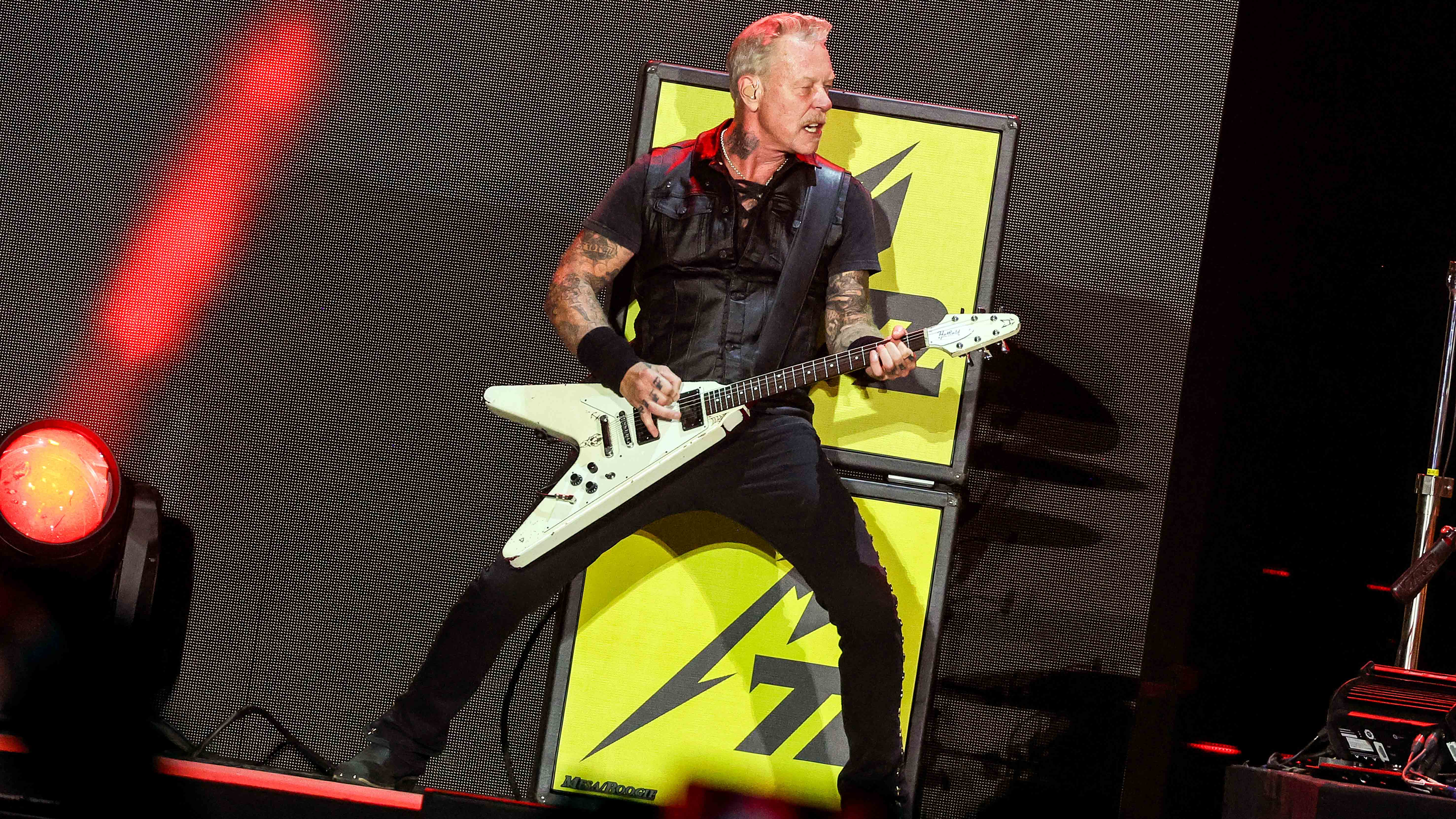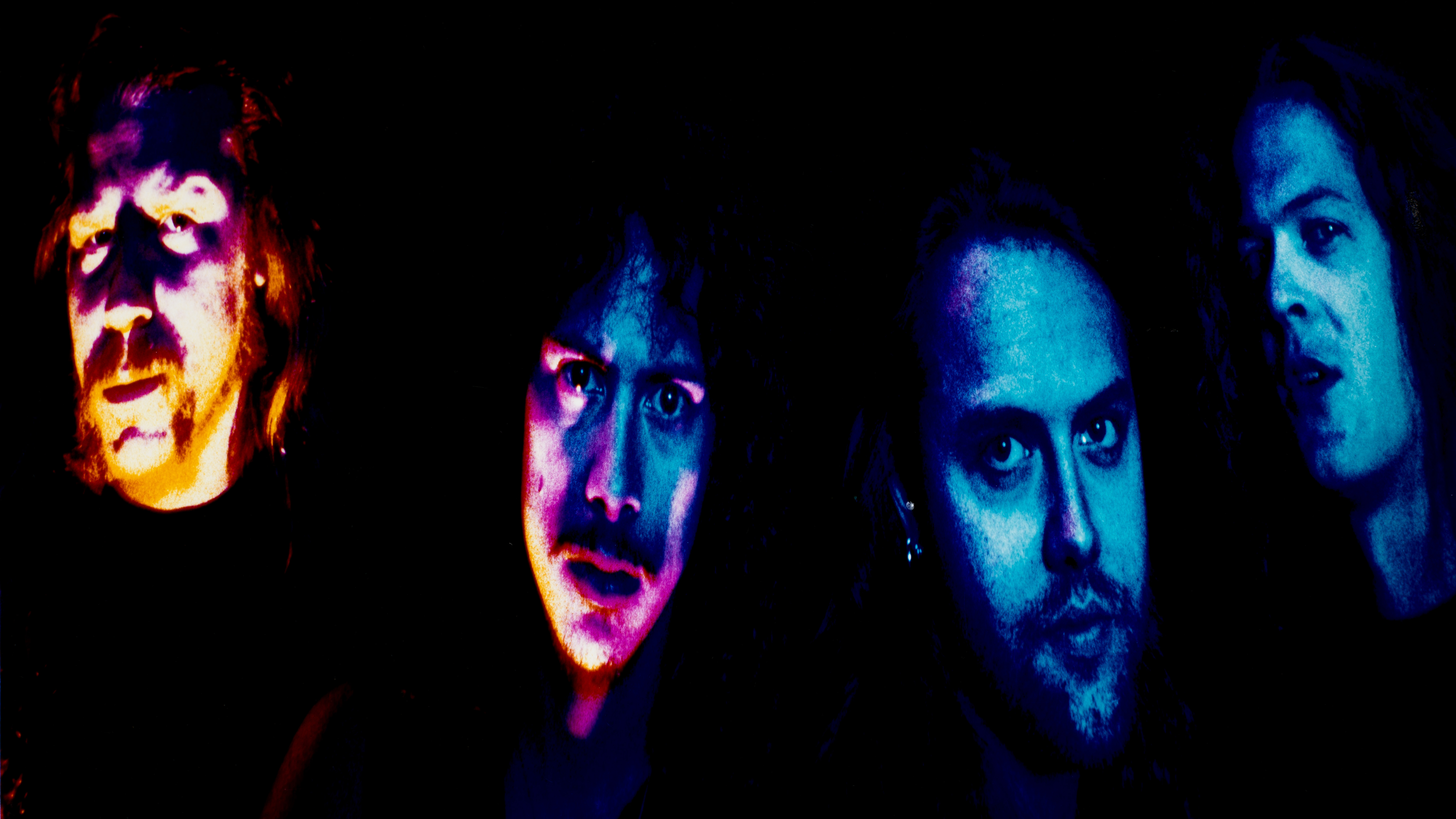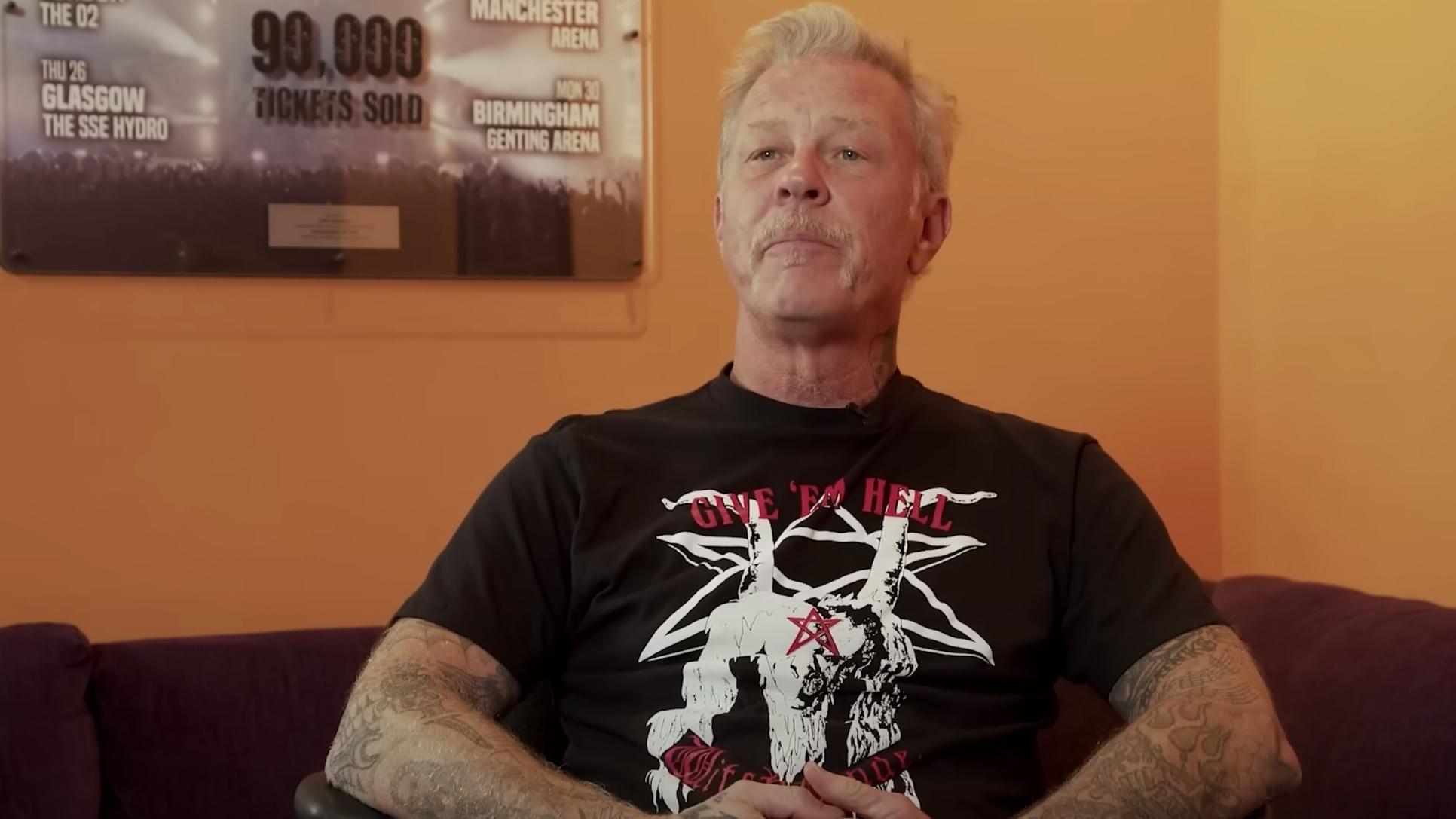
Some years are watershed moments in musical history, and 1991 was one of them. It was the year that grunge broke and that hair metal was given a shove out of the mainstream. It was also the year that Metallica released Metallica. Forever known as The Black Album, it was the record that capitalised on the success of their previous release, And Justice For All, and established the San Francisco quartet as the biggest metal band in the world.
Although it featured five hit singles – Nothing Else Matters, The Unforgiven, Sad But True, Wherever I May Roam and Enter Sandman – it was the latter that really caught the public’s imagination, reaching No. 5 in the UK chart.
“It’s a riff and a song title pretty much,” James Hetfield revealed on a 1991 documentary about the genesis of the band’s songwriting process. “Especially since this time we’re doing the simpler tunes. One of the songs is like two riffs in the whole song with different singing over it, which is pretty cool.”
He’s talking about Enter Sandman. With its doomy, clean-picked minor-key riff, haunting lyric and massive sound, it was the track that set the template for the rest of The Black Album, both in sound and in atmosphere.
Getting Bob Rock in as producer was key to Metallica’s maturing sound. The aptly named Rock was the man behind both Mötley Crüe’s Dr Feelgood, The Cult’s Sonic Temple, and he had mixed Bon Jovi’s massive Slippery When Wet and New Jersey albums. At first glance he was not necessarily the best bedfellow for a Bay Area thrash band, but as drummer Lars Ulrich explained Metallica had “not been too happy with any of the mixes on the last three albums, and we thought one of the best-sounding albums we’d heard in the last few years was Dr Feelgood. Bob seemed to be able to bring out the best in whatever bands he was working with”.
Before then I used to work on the rhythm with Lars without Kirk and Jason
James Hetfield
And he certainly did with Metallica. Decamping to One On One Recording Studios in North Hollywood, Rock insisted on the band playing together in one room instead of recording their parts individually.
“Originally, I was doing all the rhythms in the studio – the right speaker, the left speaker. It was a giant wall of guitar on every album until The Black Album,” Hetfield told Total Guitar later in 1999. “I played pretty much all of it except for solos. There was a lot of colouring, whether it was little hits or harmony guitars. Kirk would come in and do all the ripping stuff, which is out of my league.
“Before then I used to work on the rhythm with Lars without Kirk and Jason,” he continued. “That time we played as a band in the studio, and it gave us much more of a vibe. We were able to watch each other. That helped a lot, especially with some of the bass and lead stuff.”
Enter Sandman was the first song they began work on, born from a riff that Kirk Hammett brought in. “The riff that’s on the record and the way it exists today is not really the way he wrote it,” Ulrich relates on the Classic Albums documentary. Kirk’s initial idea was the first five-note refrain morphing straight into the power chord breakdown. But by chopping and repeating the first clean riff, and doubling it up on the bass, Sandman as we know it was born.
In 2023, the band appeared on Howard Stern's SiriusXM show and elaborated on how Hammett's 3 am riff idea morphed into the hook we know today, with some input from Lars Ulrich.
"He came up to me and said repeat the first part three times and then play the chords afterward," recalled Hammett. "So I said, 'Ok'".
The drummer's role in songwriting for the band is often overlooked by those seeking to highlight perceived shortcomings in his drumming, but by James Hetfield's own admission, it was he and Lars who were the primary songwriters and arrangers for much of Metallica's history. It's only on recent album 72 Seasons that really began to change and the duo were more open to Hammett and current bassist Rob Trujillo's ideas.
"Lars doesn't know how to play guitar and he will arrange stuff and he'll just say, 'Hey can't you do that thing in another key'", Hetfield told Stern – elaborating on Ulrich's role in Enter Sandman's writing. "Something that I wouldn't do, like Sandman for instance [plays Enter Sandman's arpeggiated clean part] and it changed the key. It's like, 'I wouldn't do that [usually], I can't pick that. Then it would be a challenge, 'Ok, I can do that.' So there's a lot of pushing of each other. Same with drum stuff too."
Ah yes, we nearly forgot Mr Hetfield plays drums as well as everything else he's good at. "The main thing, thankfully with this bunch of guys, is when we go into a songwriting situation we leave our egos outside and it's not, 'It's my guitar – don't tell me what to play' or 'Oh, I'm the drummer – stay away,'" Ulrich told Stern.
"James will help out this part, help out that part –'Why don't you try on the toms'", added the Dane. "Of course! And I'll throw things back to James, 'Why don't you try a different key, why don't you down pick it or try galloping it, chugs instead of double-picking'… or whatever. There's that freedom because of trust, and when there's the trust, there's the love. Then you know there's nothing that's gonna happen by getting in everybody's stuff that's gonna affect the relationships, and that's a great thing."
I think Kirk had the hardest time with it because he had to play solos for each take
Bob Rock
Outside the band and despite initial resistance from the band to Bob Rock’s fearlessness at telling them what to do, the results swiftly had the band on-side. “We tried to expand every sound to the max,” remembered Rock. “We tried to get the guitars as big as possible, the bass as big as possible, the drums... You know, big and weighty.”
Metallica weren't initially enthused by the prospect of playing in one room. “They thought it was a lot of work,” Rock told Mix magazine, “and they didn’t understand it. This was the only way I knew how to make a record. To me, it was about capturing the feel that they wanted. I thought there was just this weight and size and heaviness in them that I never caught on their other records.
"I’m not saying it wasn’t there," added Rock. "I think Kirk had the hardest time with it because he had to play solos for each take. But when it came time to do the solos, we listened to everything off the floor, and he got a lot of his ideas for his solos off of those.”
The producer also explained to MusicRadar in a track-by-track interview on the Black Album about how his fearless approach extended to Jason Newsted's bass approach and the prickly subject of Hetfield's lyrical themes.
“On Sandman, I asked Jason to play more like a bass player and less like a guitarist," he reflected. "Put that with the new perspective Lars had on drums and we had a song with a killer groove.
I sat down with James and talked to him about his words. I told him, ‘What you have is great, but it can be better
“At first, based on the music and the riff, the band and their management thought it could be the first single. Then they heard James’ lyrics and realised the song was about crib death. That didn’t go over well.
“I sat down with James and talked to him about his words. I told him, ‘What you have is great, but it can be better. Does it have to be so literal?’ Not that I was thinking about the single; I just wanted him to make the song great. It was a process, him learning to say what he wanted but in a more poetic and open sort of way. He rewrote some lyrics and it was all there… the first single.”
In those days, both Hetfield and Hammett were primarily ESP men onstage, but guitars including a Telecaster, Danelectro/Coral electric sitar and Gretsch White Falcon were employed for various clean parts throughout the album. Hammett would go on to buy some iconic Gibson models later, but already had an armoury at his disposal in the early '90s.
Hetfield used a ESP MX-220 and MX-250 with active EMG 81 (bridge) and 60 (neck) humbucker pickups. This Explorer-esque shape was later renamed the EXP but would be discontinued due to Gibson's objections. Hammett, meanwhile favoured guitars including his (since sold) ESP Custom Shop KH-2 Ouija Board, 1989 black Gibson Les Paul Custom alongside a '61 Strat for cleans and ESP Les Paul-jr style guitar with EMG pickup.

For the Black Album sessions there was a lot of guitar track layering involved, but Hetfield returned to his old favourite 'Crunch Berries' amp that's still a mainstay to this day. “We tried a bunch of amps, but I ended up using the same Mesa/Boogie Simulclass Mark II [C++] that I've used on the last three albums," he told Guitar World in 1991. "In Los Angeles there are a million amps you can try out, but none of them were up to snuff.
“Bob also brought in a bunch of crappy-looking vintage amps," added Hetfield. "We gave everything a shot and ended up with the same old shit. [Laughs] I must admit, though, it was a lot of fun trying out all those little '60s and '70s amps – they really sounded unique."

But it seems there was more to Hetfield's rig for the album than he was letting on in 1991. Engineer Randy Staub elaborated to Mix that there were more elements to the signal chain than the tried and true Crunch Berries: “We ended up building this huge guitar cabinet for him,” Staub remembered. “It might have had an old Marshall head, and that would be just one part of the sound. I think his standard setup was this Mesa/Boogie head and then all these other amps were there to fill in the sonic picture. It would generally have a scooped kind of tone.
"I think we had nine or 11 cabinets, Staub added. "Some stacked on top of each other, some on the floor, some baffled off from each other – and then we’d get this huge tent around this pile of cabinets curtained because as we were getting James’ guitar sound, he kept saying, ‘I want it to have more crunch!’”
Hammett's rig was a pricier affair. "I used a [Bob] Bradshaw preamp for the lows and mids, and a couple of Marshalls for the nice clean highs," he told Guitar World. "We EQ'ed it through the board a little bit, and it worked out great."

Neither is a sound the band can simply recreate live – which is perhaps one reason they've leaned into the use of the Fractal Audio Axe-Fx for Mesa and Diezel-inspired models in more recent years.
My live sound does not work in the studio, which is a completely different animal," Hetfield told Guitar World in 1991. "Every little thing is detrimental to the sound. And if someone moves a mic, you've lost it. It's pretty much a case of ‘lock the door and set up a police line.’”








